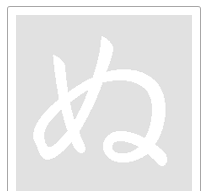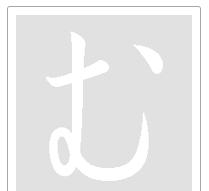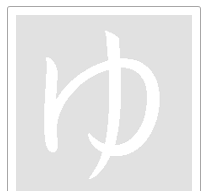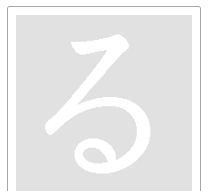 |
||||
 |
||||
Hiragana-7 Examine the following characters: |
||||||||||||||||||||||
| Practice how to write these 8 characters, following the video. | ||||||||||||||||||||||
|
つ tsu づ zu Compare the following pair of characters: This is how to draw the character つ. It is composed of a single stroke.
But this character is rarely used in modern Japanese. づ, with their two dots are, rarely used because its sound zu, is exactly the same thing as ず. Occasionally you may see this spelling for some peculiar reasons; in that case read it as zu. To get this character on the computer, spell du.
|
|
|||||||||||||||||||||
| め me
This is how to draw the character め. It is composed of two strokes.
め is the hiragana equivalent to メ in katakana, and is pronounced me. |
|
|||||||||||||||||||||
|
ぬ nu This is how to draw the character ぬ. It is composed of two strokes.
ぬ is the hiragana equivalent to ヌ in katakana, so it is pronounced nu. Notice that ぬ looks like め but the ending of the last stroke is different. It starts from the top right, circles clockwise and makes a small circle at the end. |
|
|||||||||||||||||||||
| む mu
This is how to draw the character む. It is composed of three strokes.
む is the hiragana equivalent to ム in katakana, so it is pronounced mu.
|
|
|||||||||||||||||||||
| ゆ yu
This is how to draw the character ゆ. It is composed of two strokes, but one continuous motion.
ゆ is the hiragana equivalent to ユ in katakana, so it is pronounced yu. Writing ゆ may be slightly difficult. Start out from top left, go down, and then go up circling clockwise all the way up to the center, from where you come down back again slightly to the left. |
|
|||||||||||||||||||||
| る ru
This is how to draw the character る. It is composed of a single stroke.
る is the hiragana equivalent to ル in katakana, and is pronounced ru. る looks quite similar to ろ. The only difference is that you make a small circle at the end of the stroke. Their pronunciations are similar as well. ろ stands for ro while る for ru. |
|
|||||||||||||||||||||
| れ re
This is how to draw the character れ. It is composed of two strokes.
れ is
the hiragana equivalent to レ
in katakana,
so it is pronounced re. れ
looks quite similar to わ,
the difference being the final touch. While in writing わ
you almost make a circle clockwise and finish to the right, in れ you do not make a circle but come down almost straight first, and then back up
again slightly before you finish the stroke. This completes all the
hiragana characters except one, which is explained at the end of this Chapter. |
|
|||||||||||||||||||||









